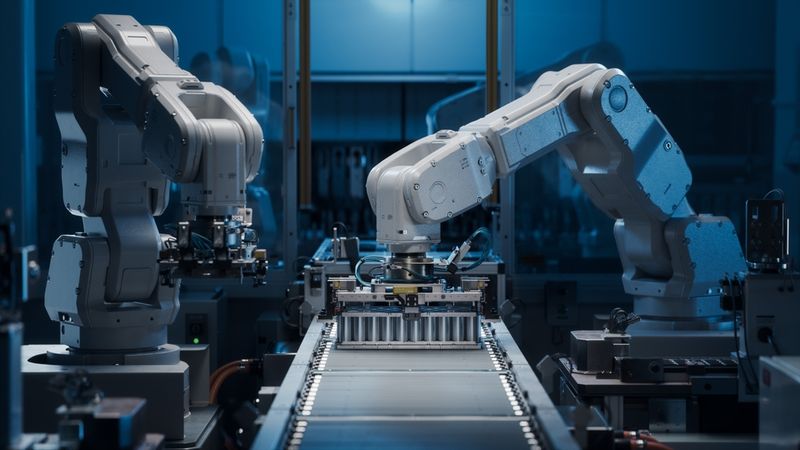Automotive Assembly Lines: Intelligent Solutions for Complex Processes
Automation on automotive assembly lines maximizes production quality and throughput.
Automotive companies both large and small are adapting to new markets and new technologies. Harsh manufacturing environments, challenging targets, and operator safety require rugged and reliable solutions that reduce downtime due to inadvertent stoppages. As more sophisticated components find their way into vehicles automotive manufacturers will need to effectively modernize and optimize their production.
With robust sensors, lighting, condition monitoring, and safety, products, challenges related to quality inspection, assembly, finishing, and inventory tracking across the global supply chain are simplified. Every day, automotive and tyer manufacturers around the world rely on Banner to solve simple to complex automation challenges in the automotive marketplace.
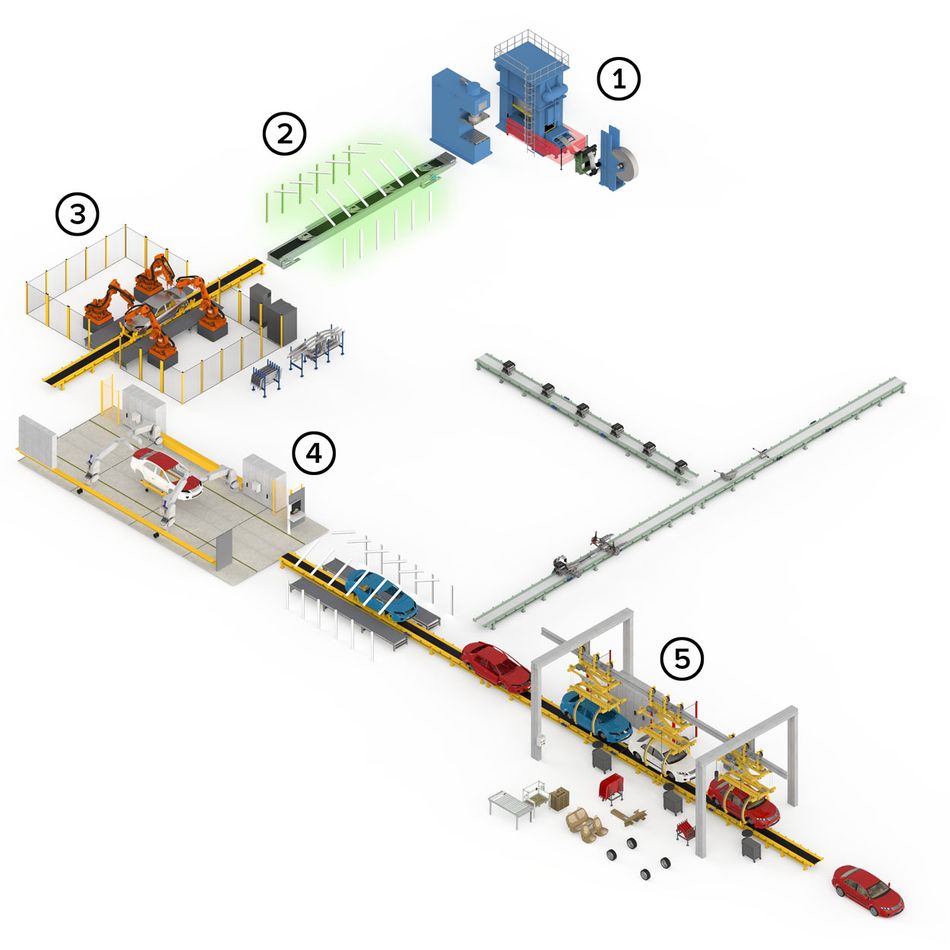
Image Key
- Measuring Sheet Metal Thickness
- Light Tunnels for Paint Inspection
- Safeguarding Areas on Assembly Lines
- Predictive Maintenance and Condition Monitoring of Conveyors
- Detecting Black Parts on Black Door Panel
#1 Measuring Sheet Metal Thickness
In the automotive industry, sheet metal stamping is the process of cutting and shaping metal alloys into automotive frame brackets and other forms using a press tool. Metal stamping dyes are used to create high precision metal parts that are equal in shape and size. Automotive sheet metal stamping requires a specific thickness to ensure the parts are equal, and to ensure the dye is not damaged during the process to prevent down time and costly repairs.
As metal sheets move down the conveyor, laser displacement sensors measure the sheets on a very precise scale to ensure they are the correct thickness. Quality control is critical to reduce downtime and scrap and maintain high quality standards, so the finished product functions as intended for its useful life. Electrode thickness measurements are made after the coating and roll press processes. At these points, it’s critical to measure the electrode film thickness to determine if it was applied correctly, evenly, and whether any is missing.
The LM Series precision measurement sensor is a perfect solution because it is highly accurate and measures thickness at micron levels. The LM Series can also consistently look at dark targets on these levels and is capable of micrometer-level resolutions ranging from 2-4 microns, which gives it the ability to measure thickness of sheet metal quickly and accurately. Using a status display to show measurements of the electrode thickness helps operators quickly view measurements to determine if manufacturing requirements are on track. The SD50 Status Display informs operators about exactly what is going on so they can respond quickly and accurately.
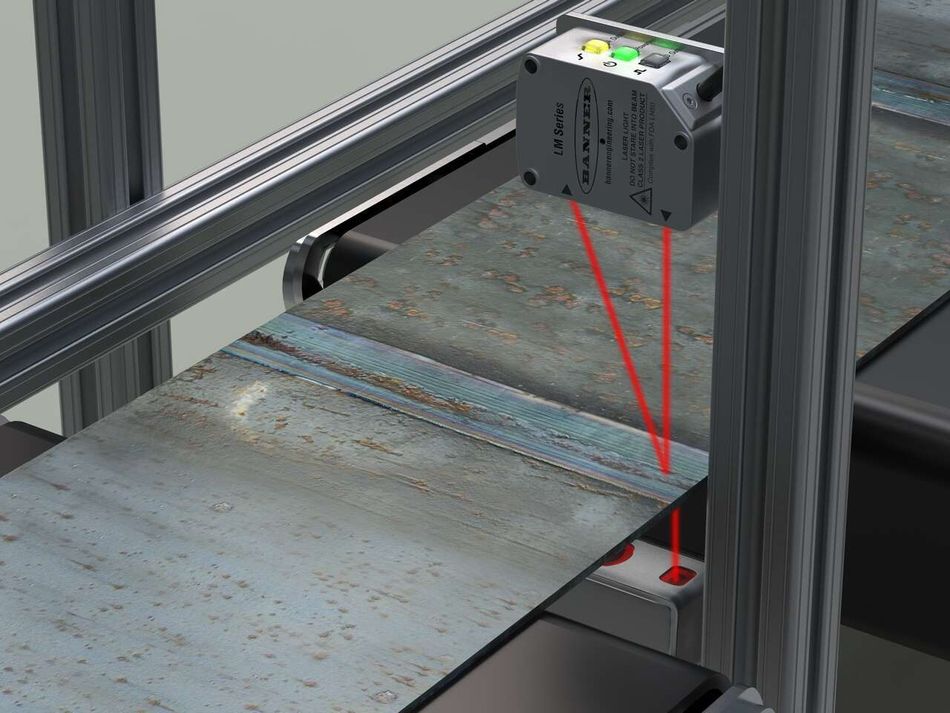
Light Tunnels for Paint Inspection
To help prevent poor quality products from being distributed to customers, it is important to inspect vehicles before they leave the manufacturing plant. When inspecting metal or plastic surfaces in these conditions, imperfections such as fingerprints, dirt, or damaged areas can easily be overlooked. Materials that are shipped with these flaws may require additional repair or recall, which would then drive-up unwanted expenses and cause delays in production. Operators can experience eye strain when inspecting vehicles in paint tunnels.
Automotive factories need lights that help to reduce worker fatigue, eliminate defects, and allow proper inspection. Banner offers an assortment of LED products, such as the WLB92 and WLB72 task lights to help with this. Using LED lighting on factory floors offers many advantages. The focused beam and higher contrast enable workers to see contrast and make defects more visible to the human eye. Inspection using these lights reduces shadows, improves visibility, and gives workers the light they need to work efficiently and without making mistakes. This is especially important in the automotive industry where oil residue on metalized paint can make fisheye imperfections, which are small circular spots that appear on contaminated surfaces.
The black edges of the WLB72 shield workers from direct contact with the light when looking down the length of paint tunnels. The various rugged light fixtures offer high quality and low power illumination with the capability to be installed and rotated at different angles to better accommodate the needs of the operator. They have an estimated lifespan of over 50,000 hours and never require replacement bulbs or ballasts, providing years of maintenance-free illumination.
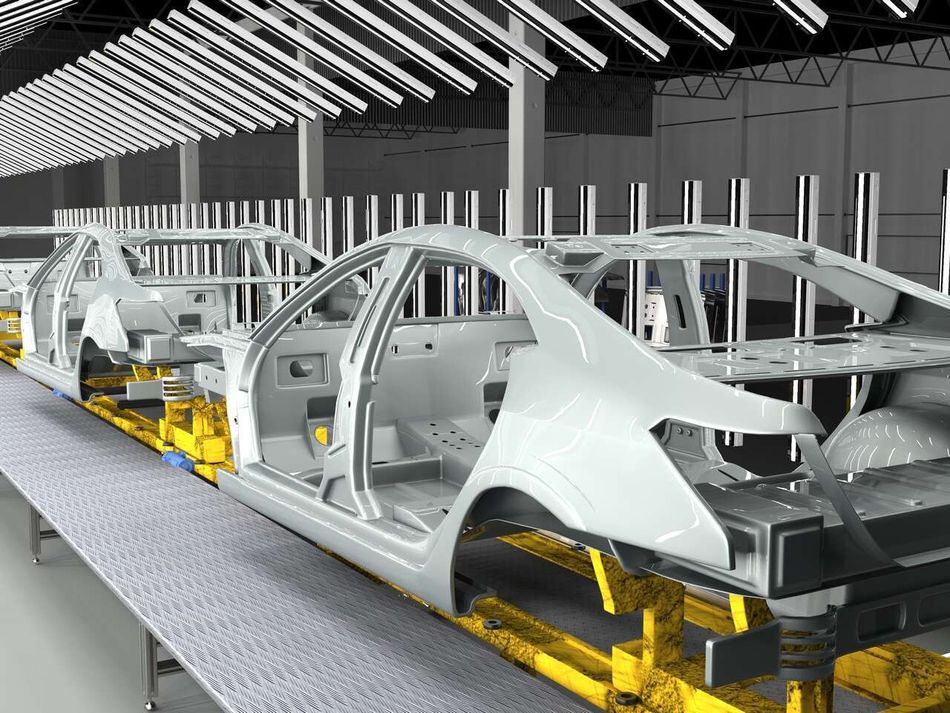
#3 Safeguarding Areas on Assembly Lines
Large automotive assembly factories feature a wide range of machinery that have the potential to harm employees and proper safety measures are essential. As cars and other vehicles are assembled, they move further along a conveyor system, surrounded by automated heavy machinery and robotics. Personnel need to be protected from the vehicles and operating equipment to prevent injury. Areas along the assembly line can pose high levels of risk to operators feeding or removing parts and other personnel working in the manufacturing facility. Often times several safety systems are used simultaneously to prevent workers from entering hazardous areas.
The use of safety light curtains for safeguarding assembly lines has been one of the most common methods for protecting personnel. The heavy machinery generates high levels of shock, which increases the probability of physical impact to the guarding system and can also involve oil mist that degrades the light curtain performance. All of these challenges can result in unwanted interruptions in production to allow for safety system maintenance. A strong safety light curtain solution that can withstand the hostile environment in the press room is necessary for successful production.
The S4B Series Safety Light Curtains are a well-established solution for automotive assembly lines, with the ability to cascade or connect multiple segments together. Configurations such as vertical pairs are easily implemented with standard hardware to ensure simplified installation and support long term system maintenance requirements. Banner Engineering’s S4B Series Safety Light Curtains are extremely robust with heavy duty, extruded aluminum IP65 rated housing that overcomes optical degradation due to oil and dust accumulation on their windows.

#4 Predictive Maintenance and Condition Monitoring of Conveyors
On automotive assembly lines, there are a lot of critical devices like pumps and drives, which need to be checked frequently for proper operation. Traditionally, plant managers relied on preventative maintenance schedules provided by a machine’s manufacturer, including regularly replacing machine components on a suggested timeline. However, these timelines are only estimates of when the machine will require service, and the actual use of the machine can greatly affect the reliability of these estimates.
By monitoring motors, pumps, compressors, fans, blowers, and gearboxes for increases in vibration, problems can be detected before they become too severe and cause damage or unplanned downtime. Vibration and temperature sensors that measure RMS velocity, in inches per second or millimeters per second, and temperature are crucial when setting up condition monitoring systems. Banner’s QM30VT Series sensors have a low-profile design and rigid metal construction that reduces resonant interference and increases surface contact, enabling exceptional levels of accuracy in measuring RMS velocity and temperature. They can detect even slight increases in machine vibration and temperature for early identification of potential problems.
With Banner's condition monitoring solution, a machine learning algorithm establishes a vibration baseline for the machine. When a machine exceeds its threshold, the wireless temperature and vibration sensor can deliver information to the local user, to a centrally located wireless tower light or to a mobile device via email or text message. The sensor also can send vibration and temperature data to a wireless logic controller or PLC for collection and analysis. The Asset Monitoring Gateway (AMG) with SNAP ID from Banner can collect and analyze this data from up to 20 of the connected sensors. Combine hardware and software to gain a comprehensive condition-monitoring solution. Using the gateway locally or cloud technology online, you can actively track machine performance, conduct predictive maintenance, and improve operational efficiency.
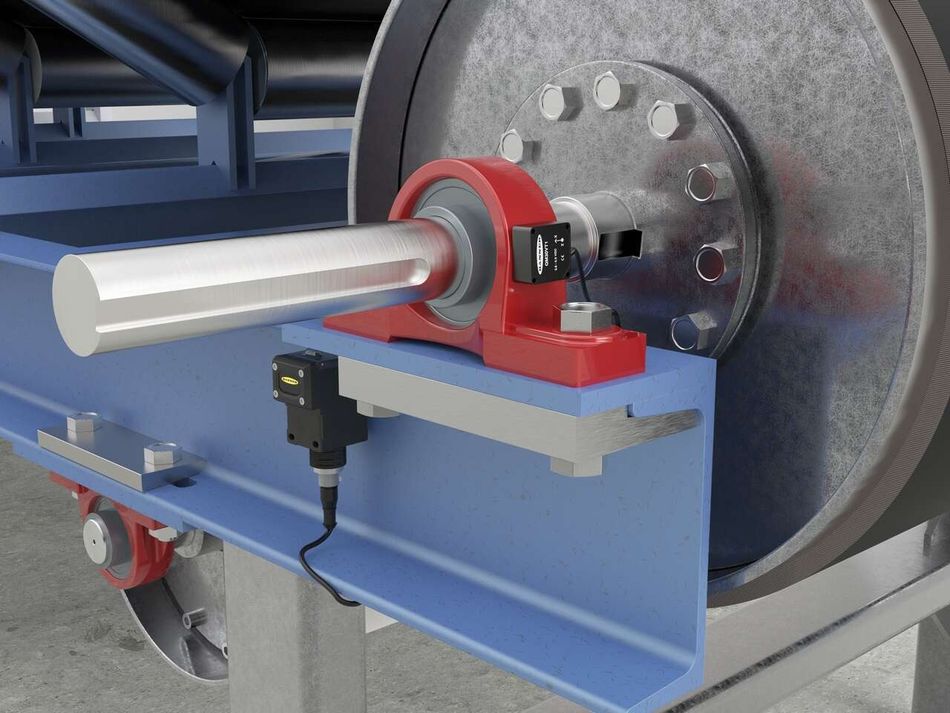
#5 Detecting Black Parts on a Black Door Panel
Verifying that foam and other components are present on automotive door panels is extremely important to interior trim suppliers because if any part is missing, the quality of the final door assembly is adversely affected. Delivering a bad part to the car manufacturer may result delays or in punitive actions against the Tier 1 supplier. Since door panels are often dark colors such as black or gray, and the foam used to eliminate rattles and provide stiffness is generally black, it can be difficult for standard sensors to differentiate between foam presence and absence due to poor contrast.
Banner’s Q4X problem-solving triangulation-based laser sensor has no difficulty detecting dark targets on dark backgrounds when there is a height difference. The Q4X provides a reliable sensing solution with best in class excess gain and makes pass/fail judgments based on distance rather than color or reflectivity. A door panel has four areas where foam should be present, so four Q4X sensors are set up to target these areas and confirm proper assembly by the operator. In this case, three targets are verified, but the fourth is missing. A fail signal is sent to alert the operator that the part needs to be reworked before releasing it from the assembly station. Along with reliable sensing on challenging targets, the Q4X is extremely durable with stainless-steel housing that resists mechanical impact, vibrations and overtightening. The setup is simple with clear user feedback on the four-digit angled display and set-up buttons located on the back of the Q4X housing.

This article was written by Emmanuel Quellier, Banner Engineering.

